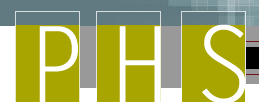

| Throughout American history, pharmacists or apothecaries have played a crucial role in treating and caring for the sick. During the early years of the nation's history, most apothecary shops were run either by physicians or their apprentices. In some instances, apothecaries were hired directly by physicians or even hospitals.
As apothecaries became more and more central to the practice of medicine, both physicians and pharmacists began to call for greater consistencies in how medicines were compounded. These calls ultimately led to the first schools of pharmacy and the creation of the United States Pharmacopeia in 1820. Although not officially recognized by the federal government at the time, this compendium ultimately became the standard guide to drugs. While the Pharmacopeia attempted to set drug standards, pharmacists themselves were only loosely regulated during this period. By the mid-nineteenth century, however, a growing number of elite pharmacists had become concerned about competition from less well-trained, and cheaper, pharmacists. In 1852, these elite pharmacists met and established the American Pharmaceutical Association. By the 1870s, growing pressure from the American Pharmaceutical Association and a variety of other groups had resulted in the passage of state laws requiring pharmacists both to pass a state exam and to be licensed. As pharmacists became better trained, therapeutics also underwent a major shift. Germ theory, or the belief that diseases are caused by microorganisms, radically transformed the practice of medicine during the late nineteenth and early twentieth centuries. Few new drugs were introduced during this period, however, and pharmacists continued to dispense drugs, which eased symptoms as opposed to curing illnesses. The practice of pharmacy also began shifting during this period. The growth of a large-scale pharmaceutical industry meant that pharmacists were less likely to be called upon to make basic preparations of drugs within their own stores. This could now be done more cheaply and more reliably outside the shop. As pharmacists shifted their focus away from preparing basic ingredients, an understanding of chemistry and the compatibility of different ingredients became central to the profession, especially as the therapeutic armamentarium grew. Reflecting this change, a four year degree in science became a standard requirement for licensing in 1932. In the years following World War II, American pharmaceutical firms led the way in finding new drugs. Federal laws in 1938 and 1962 that regulated the testing and production of drugs required that drugs be judged safe and effective to be on the market. These developments, as well as the emergence of clinical pharmacy during the 1940s, further shaped the practice of pharmacy. By the early twenty-first century, the practice of the pharmacist had shifted dramatically. Once limited to compounding medicines in a shop, today’s pharmacists fill a variety of different roles. They provide patients and physicians with crucial information on drug interactions; they head institutional reviews of drugs and they serve as consultants to different types of health-care facilities. In doing so, pharmacists have become one of the most trusted professionals in American society. The biographies of all flags/liaison officers in the United States Public Health Services: Reference. Robert Pittman is the 12th Pharmacist to receive the rank of RADM: Reference.
|
 |